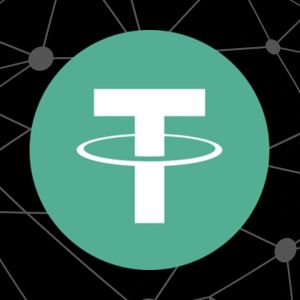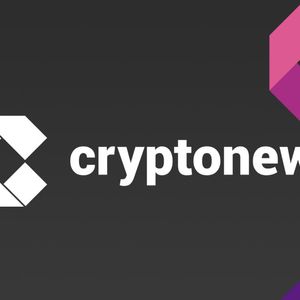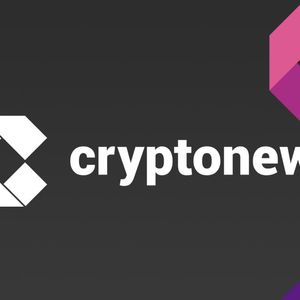Even though the current storm around its native token, EtherFi , is not going anywhere soon, the company keeps moving ahead. Toward what, exactly? The brave and audacious vision laid out by EtherFi sees it becoming a fully-fledged neobank where financial products and services function like those in DeFi. In an apparent pivot toward that goal, EtherFi this week launched a comprehensive suite of fintech products that provides its as-yet-unbanked customers with a bank credit card, a mobile app, and a way to do integrated borrowing—without using any centralized service. EtherFi offers its own mix of DeFi and traditional banking, sort of like Robert Frost’s road less taken. From Restaking Platform to Crypto-Powered Banking Alternative EtherFi, which was first known for its work in creating infrastructure for liquid restaking, is dramatically expanding its mission. The company’s restaking product served as an on-ramp for capital-efficient earnings in ETH from DeFi. Now, EtherFi is retooling itself as an alternative, next-generation bank—one built entirely on blockchain technology and serving an esoteric, mostly crypto-savvy user base. At the core of this transformation is EtherFi’s new offering: a “Cash” credit card integrated with a potent banking app. Unlike standard crypto cards that merely serve as a bridge to fiat payments, EtherFi’s solution mirrors the comprehensive functionality of neobanks like Revolut. Users access services not just limited to credit cards but also encompassing savings accounts, investment accounts, and myriad other financial services—all embedded within a single DeFi native platform. This shift emphasizes EtherFi’s larger aspiration: to create a financial ecosystem that is crypto-native yet meets the superlative standards of convenience and reliability that users expect of any traditional banking institution. A Tough Market for ETHFI Token Holders EtherFi’s bold strategy comes at a time when its community is dealing with hefty unrealized losses. According to recent on-chain analytics, 72% of $ETHFI holders acquired their tokens between one and twelve months ago—placing them right where EtherFi has most recently grown and tokenized. At the same time, a stunning 99% of current holders are out of the money—meaning their tokens are worth less than what they paid for them. The majority of $ETHFI holders (72%) acquired the token within the past 1 to 12 months, and an alarming 99% of holders are currently out of the money—highlighting widespread unrealized losses across the board. Data: @intotheblock pic.twitter.com/Z2KXUrKLZz — champagne mami (@EkponoAkwaowo) April 30, 2025 This statistic indicates a high level of discontent that is probably the result of years of inadequate communication from the team about EtherFi’s full, long-term plans. Investors thought the project was only about restaking, but it has surprised a lot of them (and probably some of its advisors, too) by recently pivoting to a DeFi neobank model. To be clear, the EtherFi team says that the neobank vision was always part of the original master plan; it just didn’t communicate that well in the past. While the market works its way through this new direction, the question is whether EtherFi can through product innovation and real-world utility restore any confidence that may have been lost. Building a Real Business on Real Revenue EtherFi’s new model distinguishes itself by aiming to create true revenue in contrast to liquidity recycling seen in much of DeFi today. The platform plans to generate income primarily through traditional financial services; this can largely be attributed to EtherFi’s team and backers, who have deep experience in mainstream finance. The income the platform generates should enable it to be self-sustaining and operate continuously. The borrowing function is now available. Users can now put up their cryptocurrency as collateral to obtain stablecoins, directly inside the EtherFi app. Most traditional neobanks are unable to offer this function, for a variety of regulatory and technical reasons, that have yet to be figured out. This setup, with EtherFi, seems to continue to navigate the space away from just being a crypto payments portal, to also being a full service (for now) DeFi banking space. It is letting users access the direct functional space, that nearly all neobanks are still unable to. EtherFi has ambitious growth plans. To realize them, it is seeking to obtain financial service licenses across Europe and North America. This regulatory push will allow the company to sell fiat on-ramps, support euro-denominated cards, and integrate with local payment networks—services that are crucial for reaching its target market. Since the emergence of DeFi, the vision behind this narrative has been to offer a complete range of banking services… without a bank @ether_fi is currently the most advanced proposition Interview with CEO @MikeSilagadze in @TheBigWhale_ (link and free-access article at the… pic.twitter.com/JVXU9XDS4J — Grégory Raymond (@gregory_raymond) April 29, 2025 Reaching the Next Frontier of DeFi Adoption EtherFi’s rebranding and product overhaul represent a large wager on the merging of DeFi and traditional finance. By making the user experience of DeFi simple and bundling together key financial tools into a single app, EtherFi is now betting on onboarding millions of users who have so far stayed on the sidelines. With the token’s recent market downturn along with some communication missteps now behind us, EtherFi stands ready to become an important player in the still-nascent space of decentralized neobanking. Delivering on this promise requires not just execution and user trust but also navigation of a tricky regulatory and technical landscape. Disclosure: This is not trading or investment advice. Always do your research before buying any cryptocurrency or investing in any services. Follow us on Twitter @nulltxnews to stay updated with the latest Crypto, NFT, AI, Cybersecurity, Distributed Computing, and Metaverse news !


















